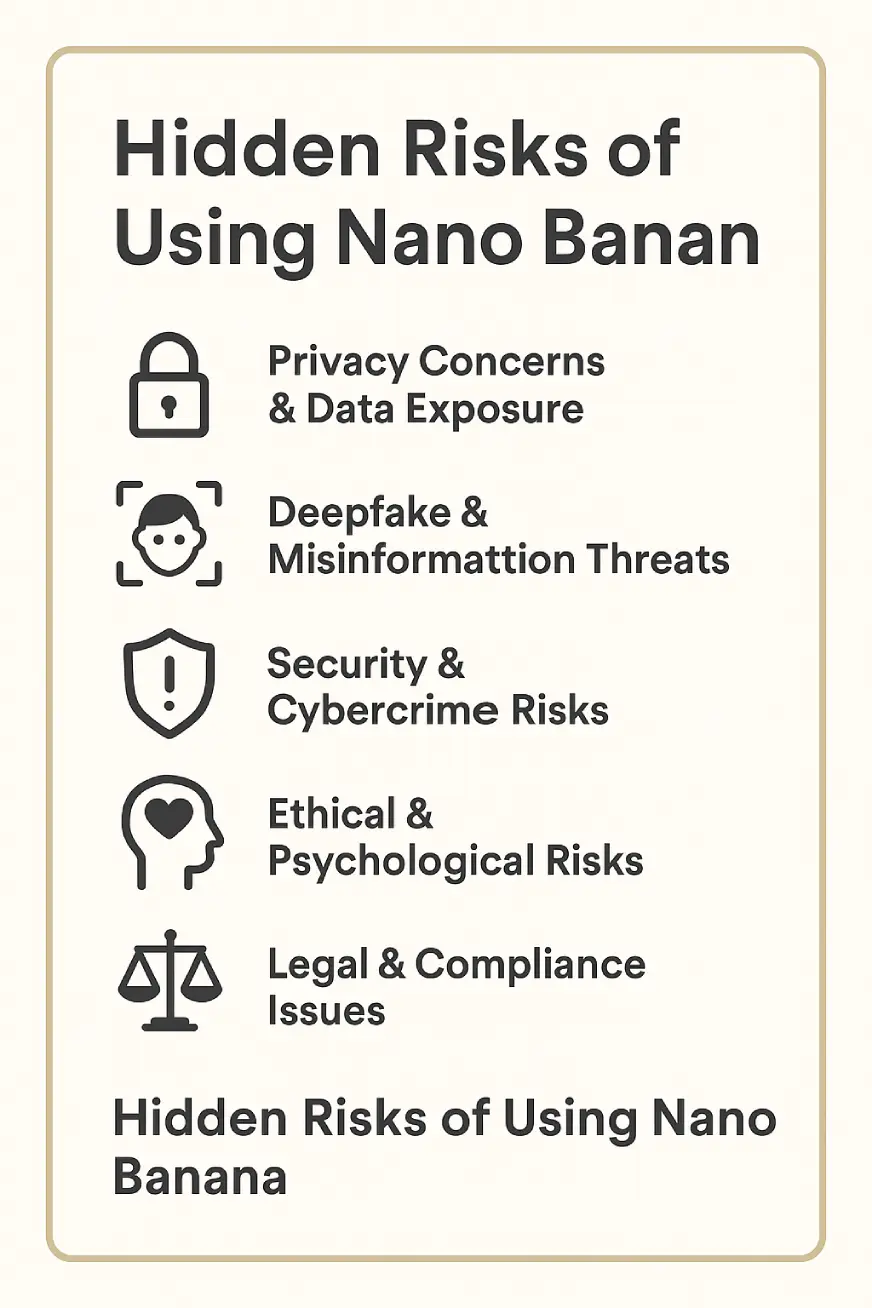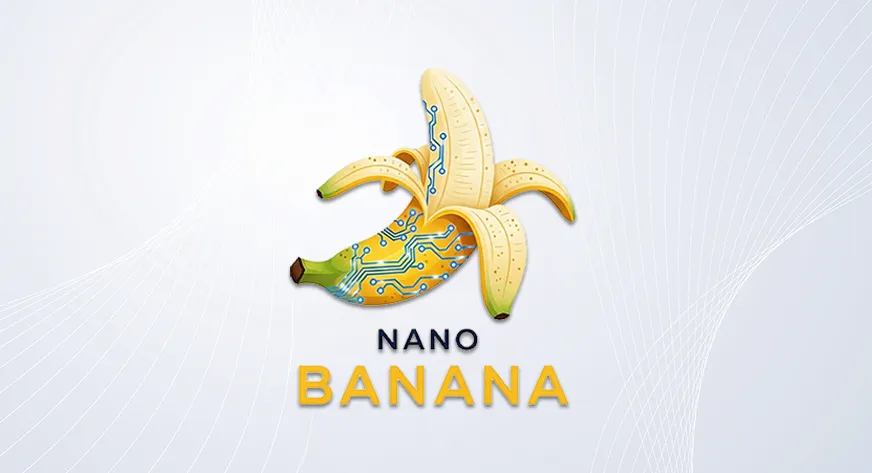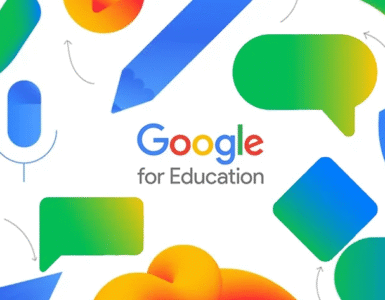In the past 10 days, your social media feed has probably been flooded with the 3D figurine trend, retro Bollywood edits, and the never-ending saree transformations! All this is powered by Google’s Gemini Nano Banana. It’s become the latest internet craze, almost like a Ghibli-style wave sweeping across social media platforms worldwide. While most people are busy experimenting with Nano Banana prompts for their next Instagram post, a smaller circle is raising concerns about the risks and safety measures that come with using this model. In this blog, we will take the less popular route and explore the safety issues and precautions you should keep in mind while using Google’s Nano Banana.
What is Nano Banana?
Nano Banana is part of Google Gemini AI, a powerful image-editing and generative AI tool. It allows users to:
- Transform selfies into stylized 3D figurines.
- Apply retro Bollywood-style edits (90s saree, cinematic lighting).
- Generate AI glamour shots and portraits.
- Use filters with invisible watermarks like SynthID for content labeling.
This feature has exploded across Instagram, YouTube, and TikTok, pulling in millions of new Gemini users. While it boosts creativity, experts warn that AI photo editing isn’t risk-free.
Also Read: 4 Ways to Access Nano Banana for FREE
The Hidden Risks Behind Nano Banana
Now, coming to the questions: Is it safe to use Nano Banana? Let’s find out in the section below:

Privacy Concerns & Data Exposure
Every photo you upload is data. That data can be saved, reused, or even misused.
- Image Upload Risks: Your selfies may be stored on Google’s servers, where they could be used to train future AI models.
- Metadata Leakage: Photos often contain hidden data (like your phone model, GPS location, or the exact time it was taken). If this metadata isn’t removed, it could reveal personal details.
- Data Retention Policies: Most users don’t read the fine print. Google’s policies may allow images to stay stored longer than you expect.
Deepfake & Misinformation Threats
AI edits are so convincing that they can easily be abused.
- Identity Misrepresentation: Nano Banana sometimes adds features (like moles or marks) that weren’t in the original photo, misrepresenting how you look.
- Deepfakes: Edited images could be repurposed for fake news, online harassment, or political manipulation.
- Trust Erosion: If AI photos flood the internet, people may stop trusting images altogether. This is dangerous for journalism, legal evidence, and public trust.
Security & Cybercrime Risks
Wherever there’s hype, cybercriminals follow.
- Fake Apps: Fraudsters have released “Nano Banana apps” that actually install malware.
- Phishing Scams: Some sites promise “exclusive Nano Banana edits” but instead steal your personal info.
- Social Engineering: Edited photos could be used in romance scams or identity theft.
Ethical & Psychological Risks
AI image editing doesn’t just affect technology; it affects people.
- Unrealistic Beauty Standards: AI edits often make faces slimmer, eyes bigger, or skin smoother. This can fuel unhealthy comparisons and self-esteem issues.
- Emotional Distress: Some users felt “creeped out” when AI added random features to their faces.
- Cultural Misrepresentation: Saree edits, while popular, risk trivializing cultural dress or offending religious communities when misused.
Legal & Compliance Issues
Laws around AI content are still evolving, and users may unknowingly break them.
- Copyright Ownership: Who owns the AI-edited photo — you, Google, or the AI model? The law isn’t clear.
- Consent & Image Rights: Using someone else’s photo without permission could land you in legal trouble.
- AI Regulations: In India, the Digital Personal Data Protection Act (2023) makes companies accountable for misusing personal data. Other countries are rolling out similar laws.
Real Example of Nano Banana Risk
A user named Jhalakbhawani posted on Instagram that after using Nano Banana to transform her selfie into a retro Bollywood-style saree image, the AI added a mole on her left hand—something that wasn’t in her original photo.
She wrote, “How did Gemini know I have a mole in this part of my body? It’s very scary and creepy.”
This case shows how the AI may fabricate realistic features, leading people to feel misrepresented or that their identity has been distorted.
How to Stay Safe While Using Nano Banana
You don’t need to stop using Nano Banana, but you should be smart about it. Here are 5 quick safety tips:
- Strip metadata before uploading – Removes hidden location and device info.
- Avoid intimate or personal photos – Never upload anything you wouldn’t want leaked.
- Use only official Google Gemini apps – Stay away from “free Nano Banana” websites.
- Keep original photos – In case you need to prove authenticity.
- Be mindful of what you share publicly – Edited photos can spread fast and be misused.
What Google & Regulators Should Do
While users can take precautions, companies and regulators also have a role to play:
- Transparent Data Policies: Google should clearly explain how long images are stored and if they’re used for training.
- Public Watermark Checkers: Tools like SynthID should be accessible to everyone.
- Better Safety Filters: Prevent subtle but harmful misedits (like adding moles or marks).
- Awareness Campaigns: Help users understand AI risks and safe practices.
How Nano Banana Probably Adds to Energy Waste
A recent study titled “The Hidden Cost of an Image: Quantifying the Energy Consumption of AI Image Generation” found huge variation in the energy used by different AI image generation models. They tested 17 models and observed energy differences of up to 46× depending on model architecture, image resolution, and quantization settings. For example, doubling image resolution sometimes multiplied energy consumption by 1.3× to 4.7×.
Here’s how those findings likely apply to Nano Banana and why the tool could be contributing significantly to energy waste:
- Lack of user awareness: Most people don’t consider energy usage when applying filters or generating multiple outputs. There are no visible indicators (in most apps) of how much energy or environmental cost a given edit incurs.
- Multiple versions per image: Users often run several prompts/filters or regenerate images until they like one. Each generation is a separate image, therefore multiple rounds multiply energy usage.
- High resolution and stylized effects: Filters like retro Bollywood saree lighting, cinematic color grading, or 3D figurine transformations often require more compute than basic editing. As in the research, higher resolution tends to cost more energy.
- Large backend infrastructure: Generative AI tools run on servers with GPUs/TPUs, which need power not just for computation but also for cooling, network, storage, etc. All this overhead adds up.
- Viral scale: Because Nano Banana is trending, millions are using it. Even if each image is relatively low in consumption, the aggregate use across all users becomes large.
Related Read
End Note
Trends like Nano Banana are exciting, but they also call for mindfulness. Every image you upload is more than a photo – it’s a piece of your data, and it fuels the system behind the trend. Beyond safety and privacy, there’s also the unseen cost of energy consumption that comes with millions of AI generations every day.
So, enjoy the creativity Nano Banana offers, but be cautious about what you choose to upload and how often you generate. A little awareness goes a long way, protecting both your digital identity and the planet.
Login to continue reading and enjoy expert-curated content.





































Add comment